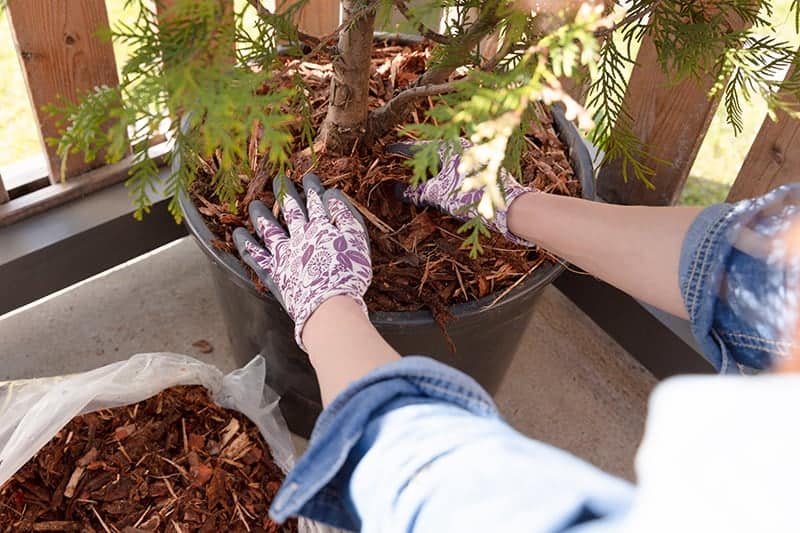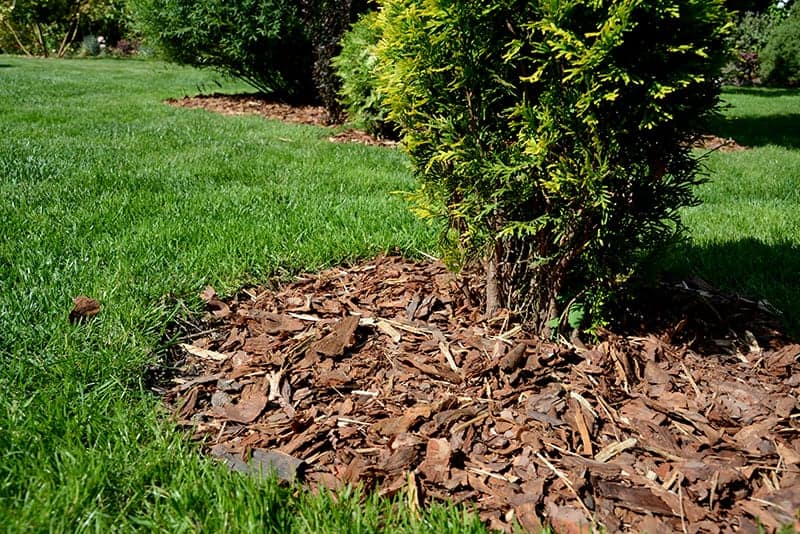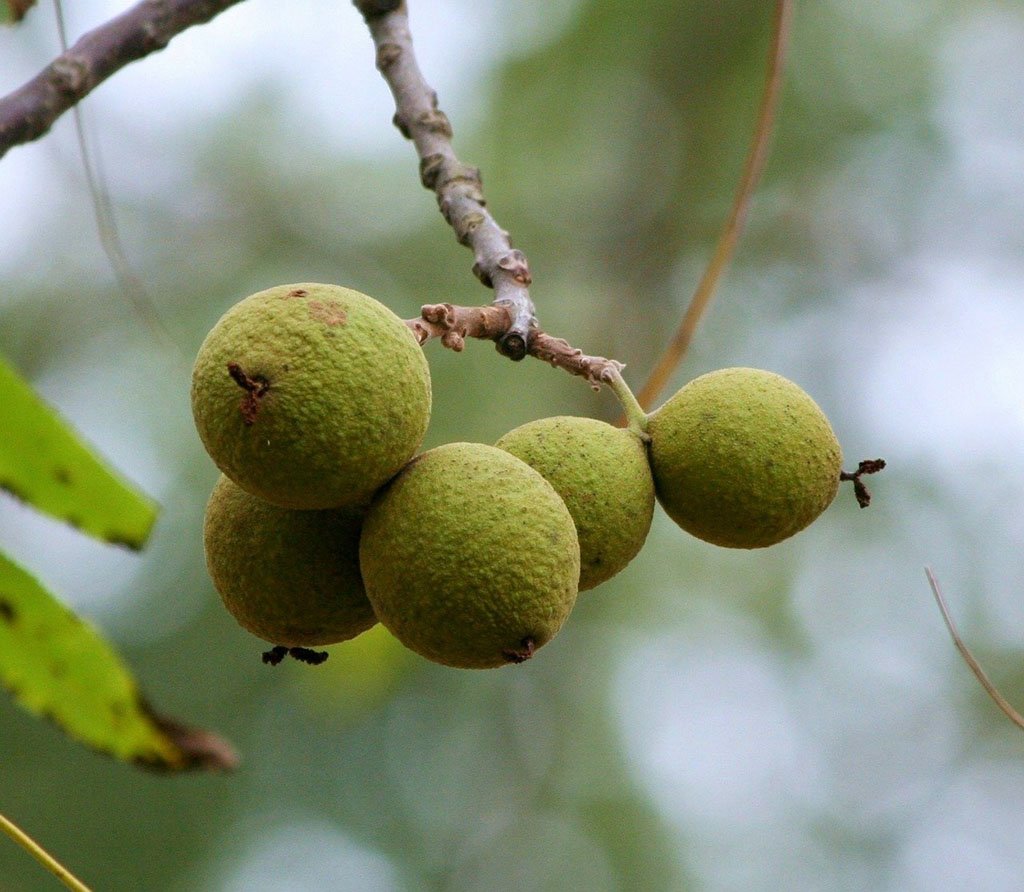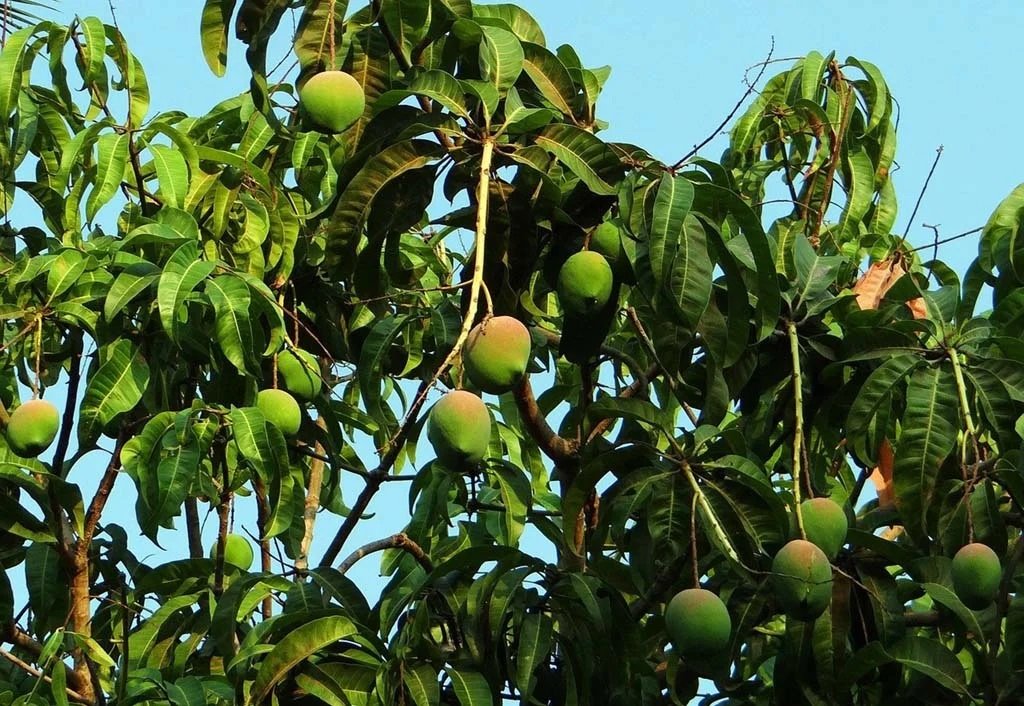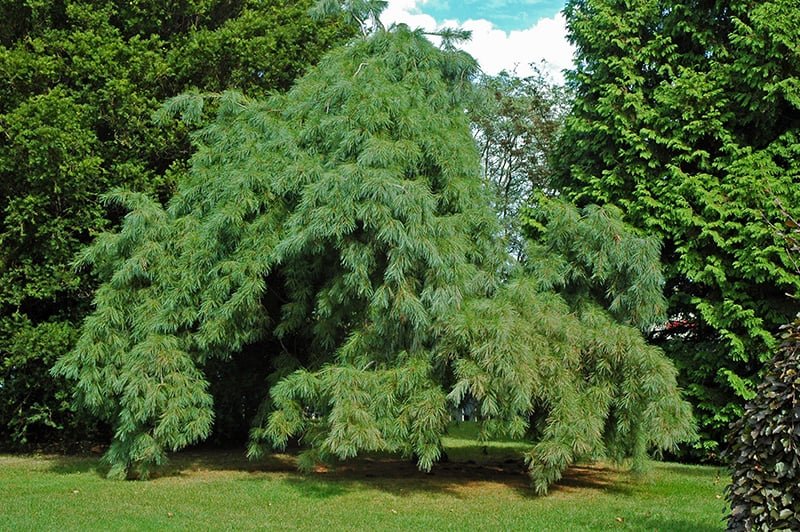Orchids are common houseplants because they are beautiful and usually fair... Read More
- Home >
- 10 Types of Organic & Inorganic Mulch You Can Use In the Garden
10 Types of Organic & Inorganic Mulch You Can Use In the Garden
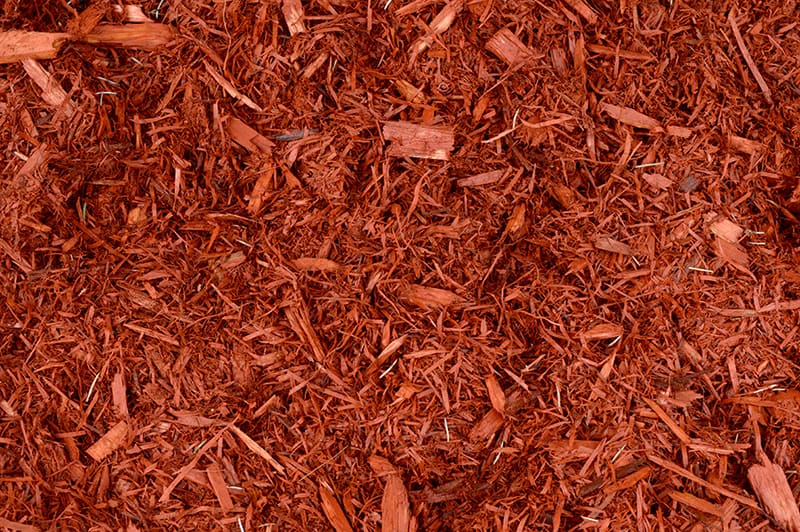
One of the best and cost-effective methods to improve the soil quality for plant growth is using mulch. Seasoned gardeners used it for decades while beginners want to learn more about it.
In this article, let’s learn in-depth about different types of mulch for gardening use. We’ll category them by organic & inorganic varieties with facts and uses.
What is Mulch?
Mulch is any type of soil covering which is spread or laid on top of the soil. It is used primarily to help the health of the soil and the growth of plants, but it can also be used as a decorative feature.
Benefits of Mulching:
Prevent weeds from developing
Mulch will not completely eliminate weeds, but it can dramatically reduce the amount that appears, saving you the time and frustration of weeding in the future. Weed seeds need light and moisture to germinate, just like other plants, and mulch can inhibit their growth by denying them of these vital elements. Thick layers of mulch will also prevent a barrier, so most weed seeds cannot reach your soil to take hold.
Increase pest resistance
Some mulches provide an attractive home for beneficial insects and other creatures, which work as a natural pesticide to keep pest problems under control.
Reduce watering
Mulch helps to conserve water by reducing the evaporation of moisture in the soil. This means you will need to water less often, potentially reducing water costs and increasing your plants’ resistance to drought.
Improve soil quality
Organic mulches release nutrients into the soil as they break down over time, which improves soil quality.
Tidy up borders
Many mulches have a decorative look that helps to tidy up the look of your beds and borders, giving them a uniform and professional style.
Retain soil warmth
Mulch helps to insulate the soil, preventing heat loss and thereby retaining warmth in the soil. This is helpful for plants that are sensitive to sudden drops in temperature, or those who grow best in warm and cozy conditions.
Protect roots from extreme temperatures
As well as retaining heat in winter, mulch also helps to keep the soil cool in the summer. It acts as a temperature leveler, preventing soil from reaching extreme temperatures, and therefore protecting roots from potential damage.
How to Apply Mulch
To discourage weeds, apply a thick layer of mulch, ideally around four to six inches, after you have removed current weeds from the area. Keep mulch around one inch away from plant stems as it can cause them to rot, and leave a gap of around eight to ten inches around the trunks of trees. The best time to mulch is in early spring before weeds have germinated, and most plants are dormant, though you can apply mulch any time to soil that is not frozen.
Types of Mulch
Organic Mulches
Organic mulches are those that break down over time and, therefore, gradually improve the condition over time, releasing nutrients into the soil as they biodegrade. Organic mulches are generally lower cost than inorganic mulches, but because they disappear into the soil over time, they will need to be replaced periodically, which could represent a higher cost in the long run. Many types of organic mulch can be sourced for free, from leftover garden waste.
1. Bark and wood chips
Bark and wood chips are a popular and commonly used type of mulch, probably because they are inexpensive, they look quite decorative, and they are effective at reducing weed growth, improving moisture retention, and insulating soil. Bark and wood chippings are byproducts of the lumber industry and are generally dried and aged before being sold in large bags. Sometimes they are dyed black, brown or red, to fit in with different types of garden decor.
Hardwood chippings that have started to decompose make the best mulch for flower beds and borders, as they will break down more quickly for soil improvement. They also fit in well amongst garden landscapes, having a natural look. Softwood chippings tend to break down slower, especially pine, which can be more acidic. For this reason, softwood chippings are more appropriate around trees and large shrubs. You could also get wood chippings for free, as this is a service offered to homeowners by some municipalities. Fresh chippings that have not been dried or aged can leach nitrogen from the soil, so they are best utilized on walkways where plants are not growing; otherwise, plants may show nutrient deficiencies.
2. Grass clippings
Grass clippings have both advantages and disadvantages when it comes to using them as mulch in your garden. They are free, and utilizing them as mulch will cut down on your garden waste. However, they have a high water content which helps them decompose quite quickly, and they tend to become quite slimy and give off a foul odor. For this reason, they are best used away from areas where you spend time. They do suppress weeds well, so if this is your main aim, then grass cuttings might be a good option, but they do tend to mat together and prevent moisture from getting through, so only use a thin layer.
Ideally, use grass clippings in a flower bed and turn them into the soil at the end of the season. This will prevent a smelly build-up and will allow the nutrients of the mulch to blend into the soil and improve it. The only time you should never use grass clippings for mulch is if you have used herbicides or pesticides on your lawn; in this instance, dispose of grass clippings as they could be problematic for plant growth, especially any crops you are growing.
3. Straw
Straw is an ideal mulch for vegetable gardens and newly seeded lawns. When used in vegetable gardens, it provides a welcoming home for spiders and beneficial insects, which will help to keep pest problems under control. It also prevents soil-borne diseases from making contact with the lower leaves of vegetable plants. Straw decomposes quite slowly for organic mulch, so if you put it down in the spring, it should last the entire growing season, which should save you some work. Straw can also be easily raked up, which makes it a breeze to clean up if you want to move it aside to make space for more vegetable plants, or it can be easily worked into the soil.
Straw is commonly used as a barrier when growing fruits or vegetables that would otherwise come into contact with the ground, strawberries, or pumpkins are a good example of this. When they sit against soil for too long, they can become blemished, but the straw barrier will protect against this. When used on newly seeded lawns, straw prevents lawn seed from being washed away, and it is a deterrent to rodents and birds who would otherwise be attracted to feasting on the seeds. Straw is also good for moisture retention, which helps with good seed germination as they will perform best when they have constant and continuous moisture. Straw can also be purchased inexpensively, though be careful not to accidentally buy hay by mistake, as this will contain seeds which might result in an influx of weeds to your garden.
4. Garden compost
Composted food waste, garden products, and manure make for an excellent soil mulch. Before applying, make sure your compost has been well broken down and then spread it out around the base of plants. Compost will give the soil a slow-release nutrient boost, and will also add a layer of insulation, protecting plant roots from extreme temperatures and improving drought tolerance. Compost also works well in between other layers of mulch. To do this, apply a thin layer to the top of the soil, then go over the top of it with a different mulch type, for example, bark or wood chippings.
5. Shredded leaves
Shredded leaves are another type of mulch you can get for free by collecting the fallen leaves from around your property and shredding them. You don’t need a special machine to do this, so long as you have a lawnmower with a collection bag. Sift the leaves through the lawnmower, and they will shred them for you, after which you can lay them right on top of your soil. Leaf mulch is high in nutrients and will help to improve the condition of your soil; it also provides a home for earthworms and other soil-improving creatures. Leaf mulch isn’t always thought of as the most attractive type of mulch, but if you add it to your soil in early spring, then it will blend in quite nicely by summertime.
You can also use whole, unshredded leaves, but these tend to look messier, and they can also clump together and become compacted, which will prevent rainwater from getting past and to the soil. If this happens, periodically fluff the leaves back up with a garden rake.
6. Pine needles
If you have pine trees on your property, then you can rake up the fallen needles and spread them amongst plants as mulch. They make an attractive, natural-looking mulch, and are of course, completely free.
7. Cocoa hulls
Cocoa hulls fall in and out of favor among gardeners, as information regarding its safety fluctuates. They are widely regarded as poisonous to dogs and other wildlife, and though this claim sometimes gets refuted, it is best to steer clear of cocoa mulch if you have pets in the home. For some people, though, cocoa hulls are a popular choice of mulch, thanks to their warming brown color, and their rich, chocolatey scent. They are quite expensive, and they decompose quickly and will need replacing at least once a year, so this can prove to be a costly option compared to some other mulches. It is recommended to spread no more than a one-inch layer of cocoa hulls, as it can retain too much water and become moldy. Conversely, in dry conditions, it will blow away.
Inorganic Mulches
Inorganic mulches are those that do not break down over time. These can be either manmade products, such as rubber, or natural products like slate chippings. They do not improve soil conditions as they won’t release nutrients into the ground, and their permanence means they can be difficult to remove if you change your mind. However, they do have many benefits, and in some situations might be more suitable than organic mulches.
8. Rubber mulch
Rubber mulch is made from old tires that have been recycled and pulverized. This sort of mulch is commonly used around children’s outdoor play equipment, as it provides an inexpensive, soft, cushiony surface, which will reduce injury if anyone falls onto it. Some have hailed rubber mulch as a great insulator for vegetable plants that like to be kept in warm soil, but this is a bad idea. It should be avoided around plants as the rubber may contain toxins that could leach into your soil over time.
9. Crushed seashells
Crushed seashells are popular in coastal locations, where they are readily available. Crushed seashells can work well as a decorative mulch, particularly in containers and planters. They can be very sharp, so avoid using them near pathways, or anywhere children may accidentally fall. As a natural but inorganic mulch, seashells will not break down over time and can be very difficult to get rid of if you change your mind and want a different look.
10. Gravel, shingle, slate, pebbles, stone chippings
These types of mulch give a neat and professional finish, and they work well to insulate soil for plants that like to have warm roots. A thick layer of gravel is also great for reducing weeds, as weed seeds will be unable to root among gravel or stone chippings as they would be able to in some organic mulches, such as compost or grass clippings. The main drawback of gravel and slate chippings is the high initial cost, though these are a permanent mulching solution, so they won’t need to be replaced each season or each year as many organic mulches will. This reduces future costs and future work.
Related Content
-
How to Rebloom Orchids – Our Best Tips
-
Fogponics – How to Grow with Fog
If you are no strangers to Hydroponics, you must have known that Hydroponi... Read More
-
Calcium Nitrate Fertilizer – How to Use It on Your Plants
Even gardeners with the greenest thumbs need a little help sometimes. Calc... Read More
-
Coconut Coir – What It Is, Varieties, and How to Use It
The growing medium meets soil additive, coconut coir (or coco coir for sho... Read More
